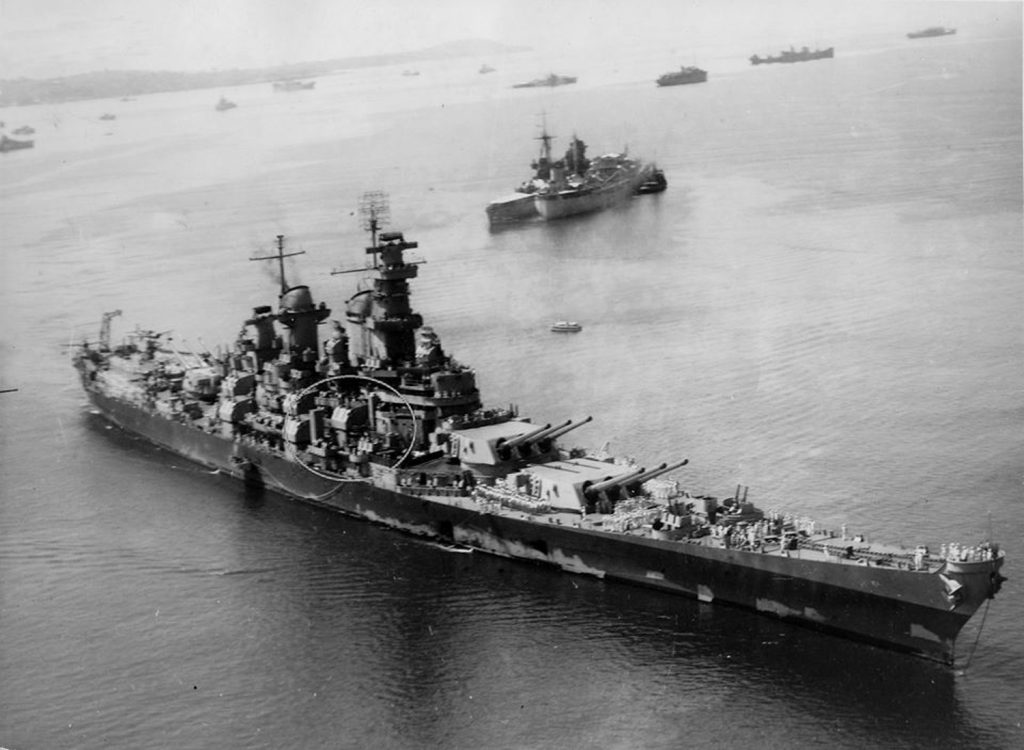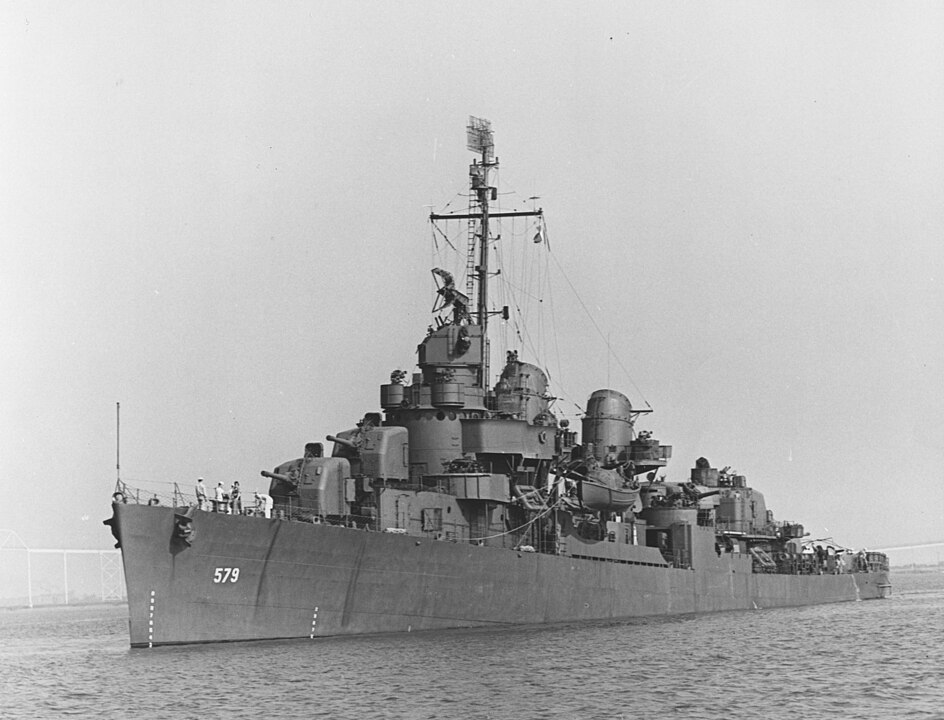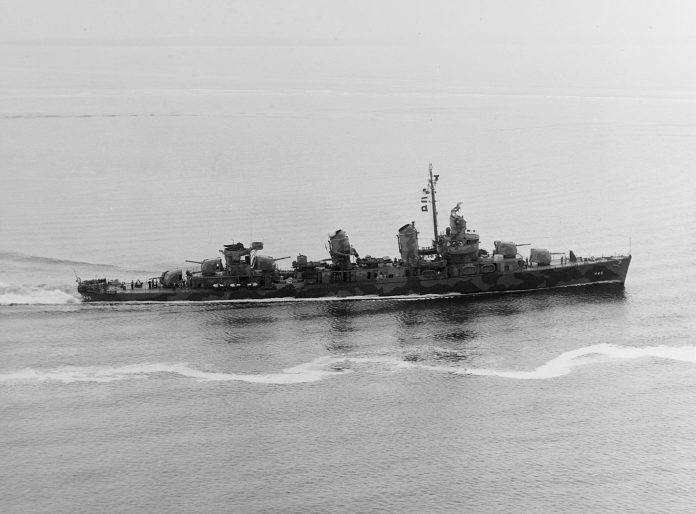
Built to be the backbone of the United States Navy during World War II, the Fletcher-class destroyers were a potent force of naval warfare. Numbering 175, these ships were the largest class of destroyers ordered, and 69 of them were lost in the war. The Fletchers played pivotal roles in every major naval engagement in the Pacific from the Battle of Guadalcanal to the Japanese surrender in Tokyo Bay.

The keel of the lead ship, the USS Fletcher (DD-445), was laid on October 2, 1941, at the Federal Shipbuilding & Dry Dock Co. in Kearny, New Jersey. By war’s end, several had been destroyed in action, such as the USS Chevalier (DD-451), sunk following a collision with a Japanese destroyer, and the USS Strong (DD-467), sunk by enemy torpedoes and shore fire near New Georgia in the Solomon Islands.

After their heroic service in World War II, many Fletcher-class destroyers were decommissioned, but with the outbreak of the Korean War, a number of these vessels were recommissioned and reclassified, contributing to naval operations during the conflict.

For instance, the USS Abbot (DD-629) was decommissioned in 1946, then recommissioned in 1951 to serve in the Korean War, before being decommissioned for the final time in 1965. Meanwhile, the USS Nicholas (DD-449) was reclassified as a DDE (destroyer escort) before being deemed unfit for service and scrapped in 1970.

The longevity of these ships is notable; for example, the USS The Sullivans (DD-537), after serving in World War II and the Korean War, became a museum ship in Buffalo, New York, while the USS Kidd (DD-661) was designated a National Historic Landmark and serves as a museum in Baton Rouge, Louisiana.

As the years passed, many Fletcher-class destroyers met their fate through scrapping, such as the USS Cassin Young (DD-793), now a museum ship in Boston. Others were sunk as target practice to pave the way for more advanced naval vessels.

These ships’ legacy continued in foreign services. Some were transferred to allied countries through the U.S. Navy’s Military Assistance Program, serving in navies around the world. The USS Radford (DD-446) and USS Jenkins (DD-447), for example, were sold for scrap in the 1970s, while others like the USS Erben (DD-631) and USS Hale (DD-642) saw continued service with foreign navies.
related images you might be interested.









